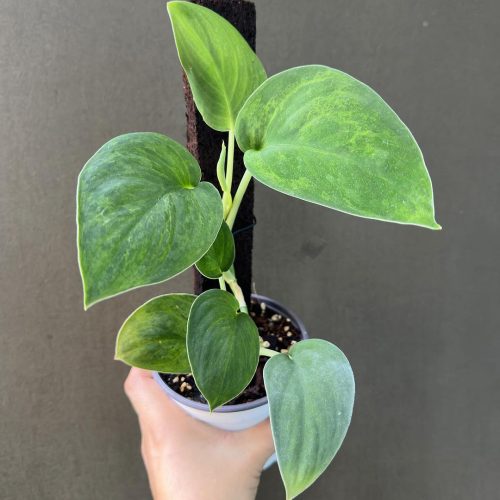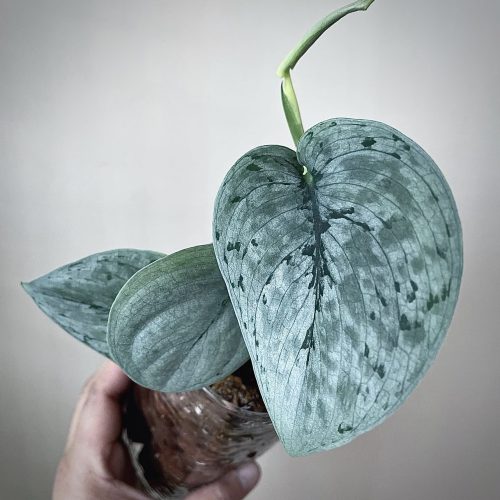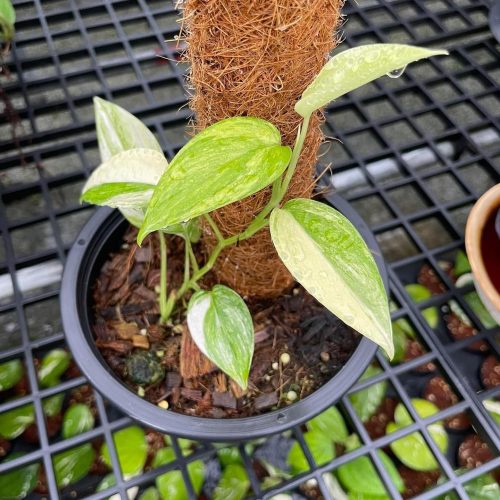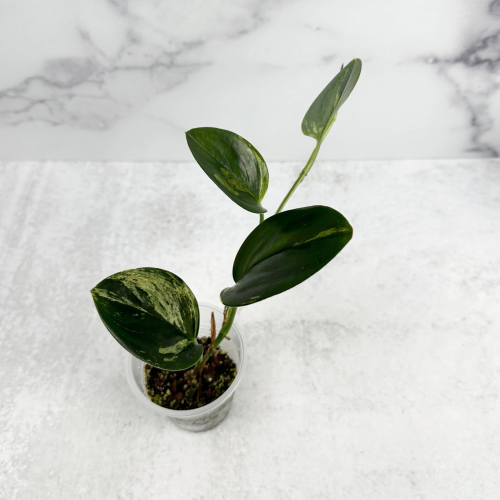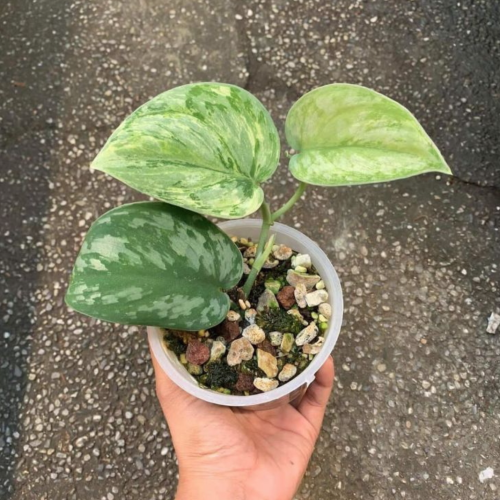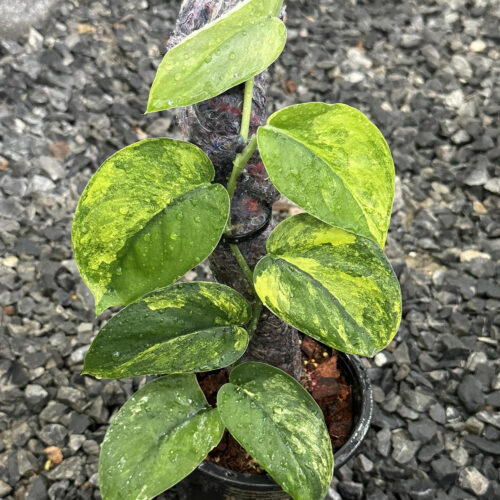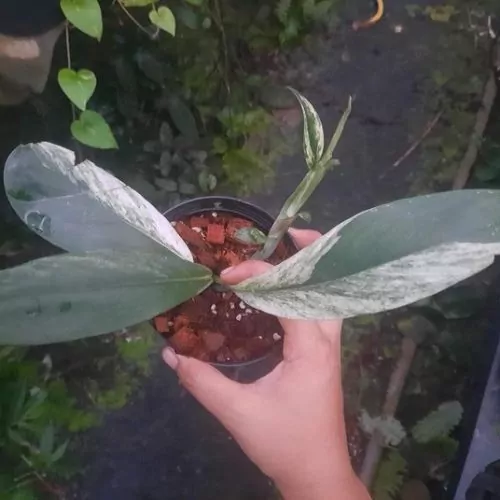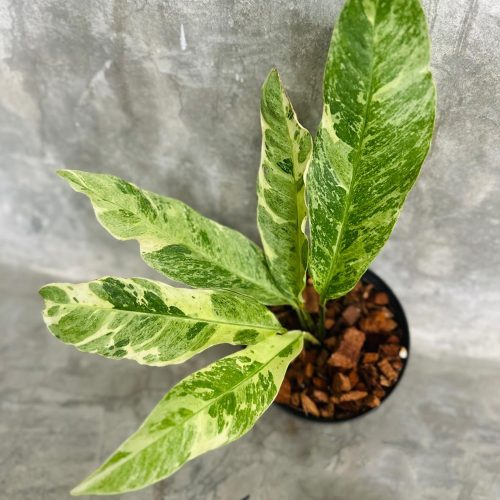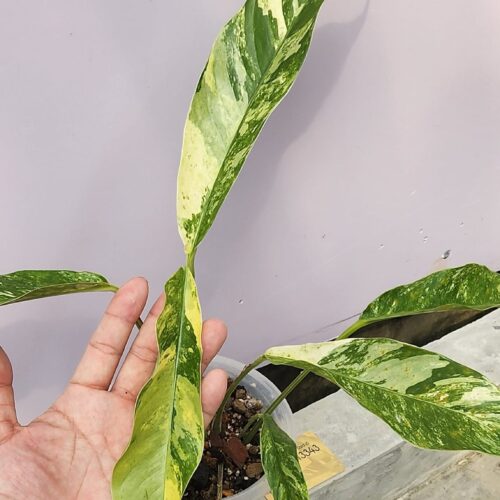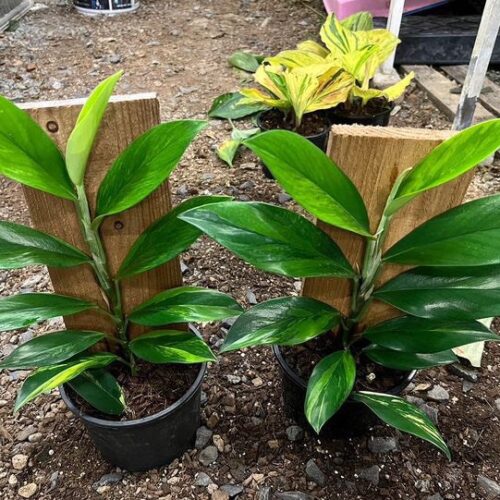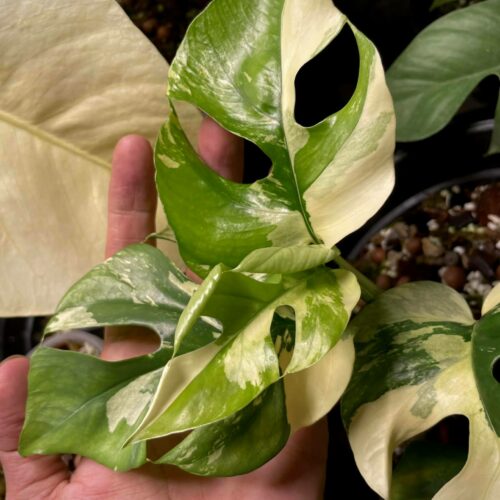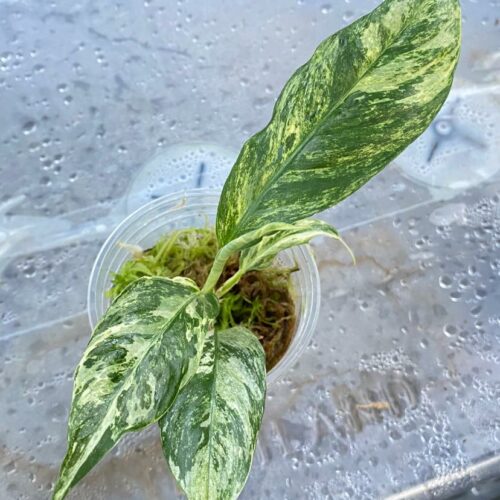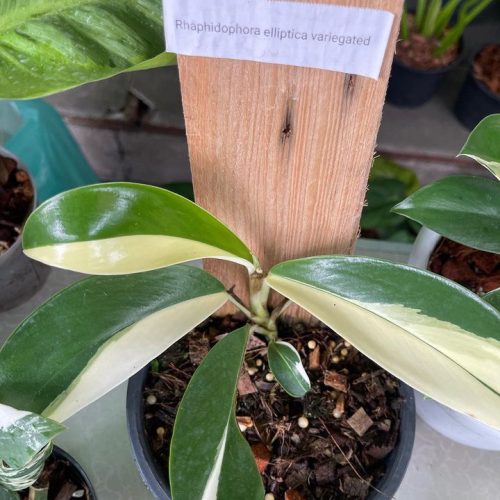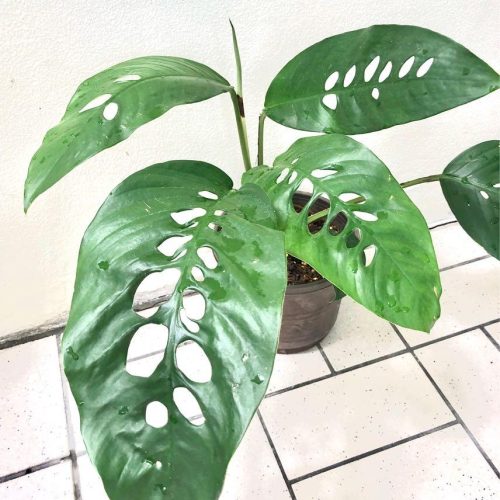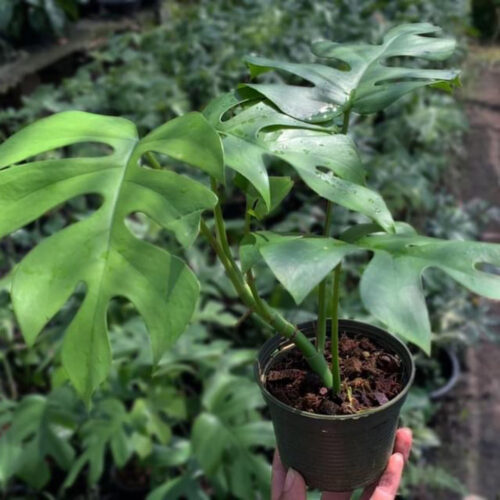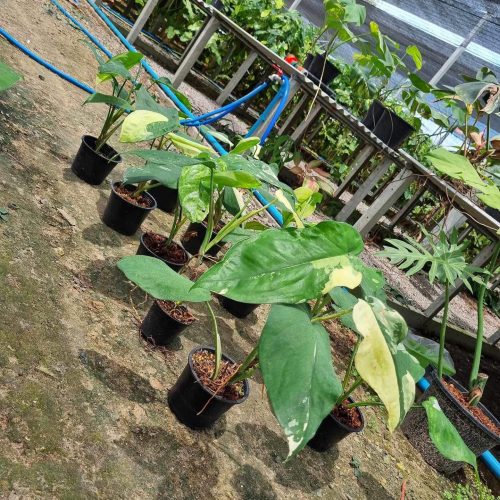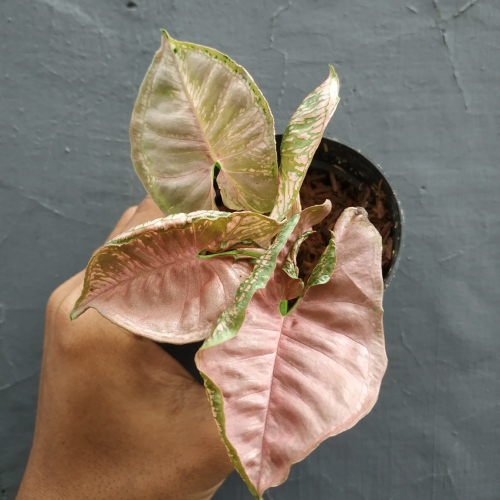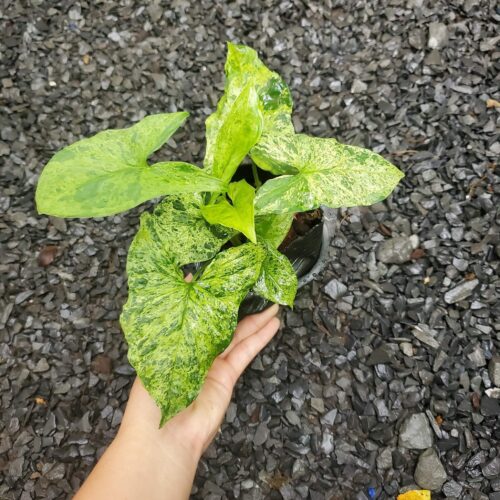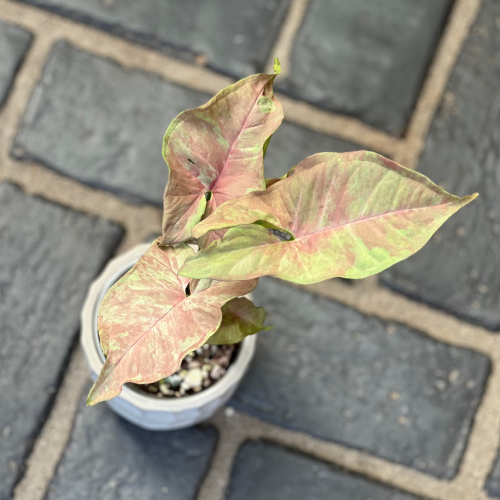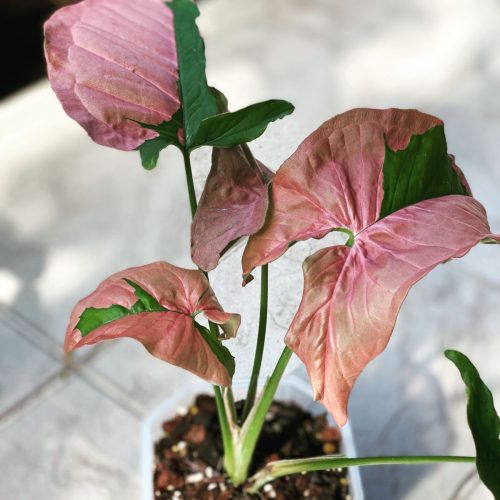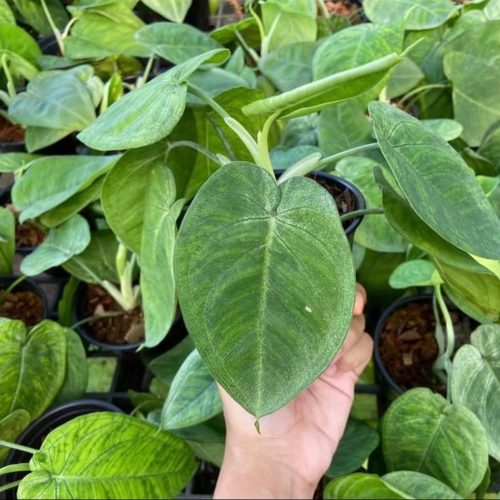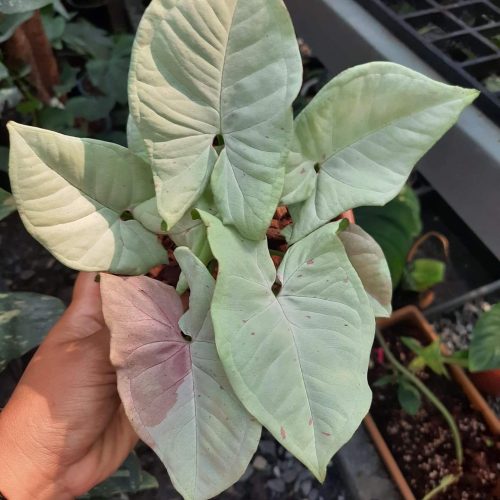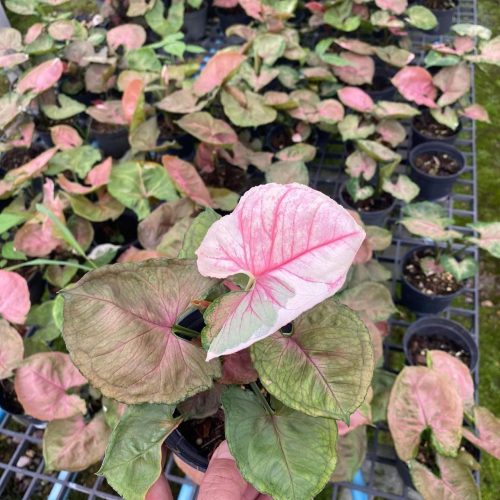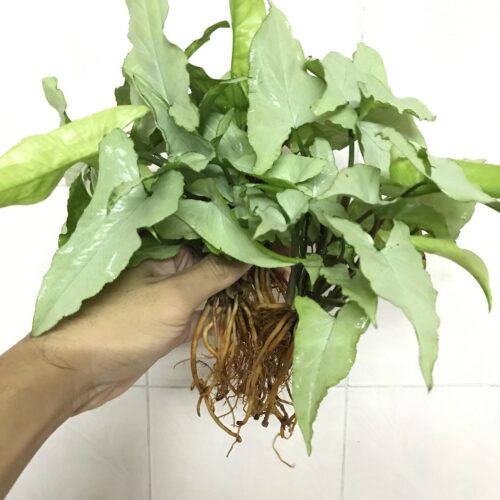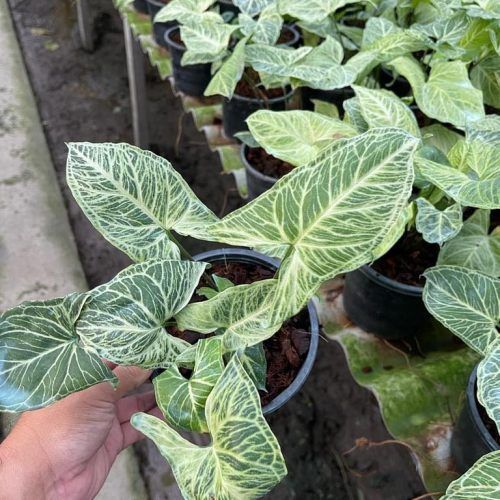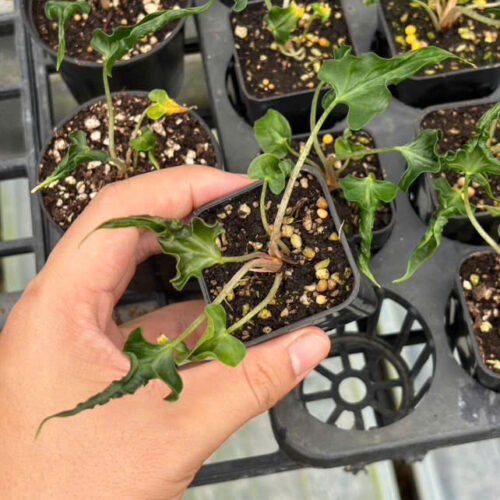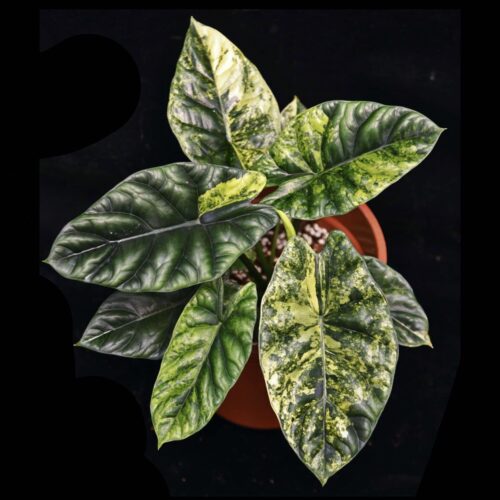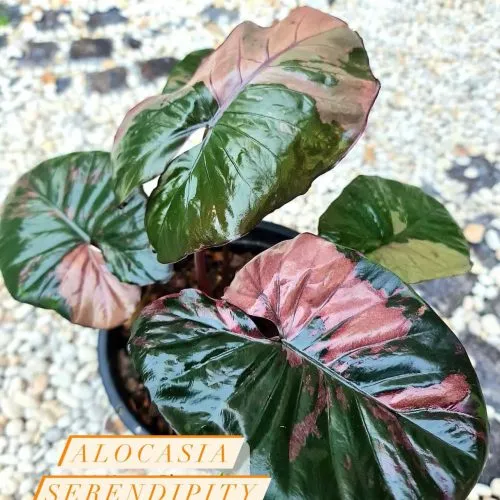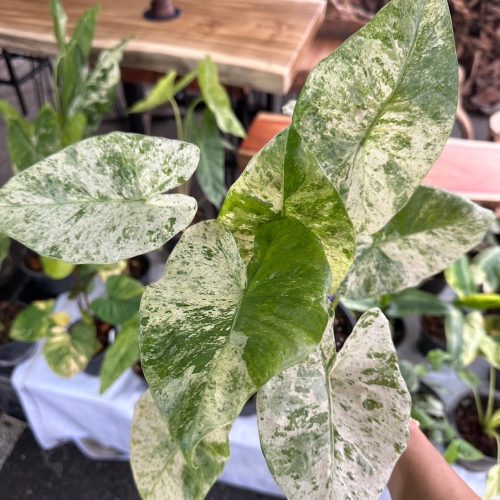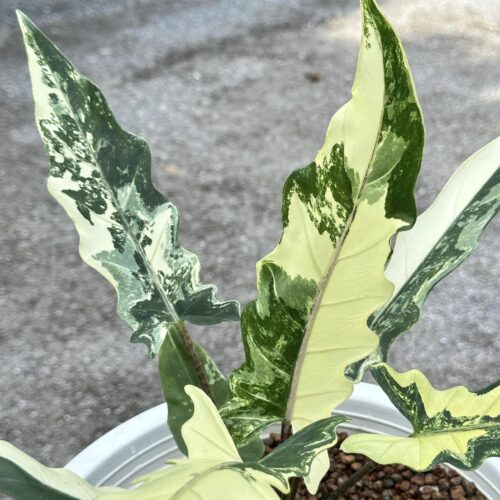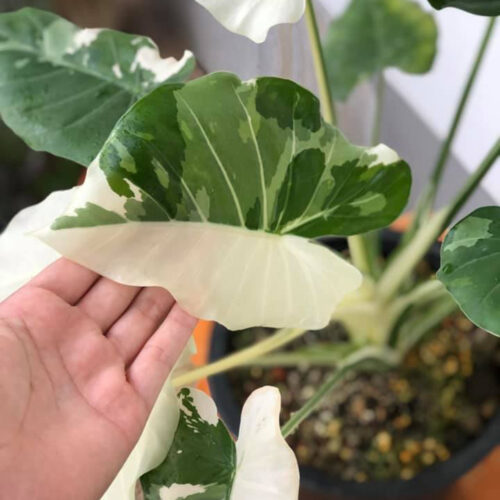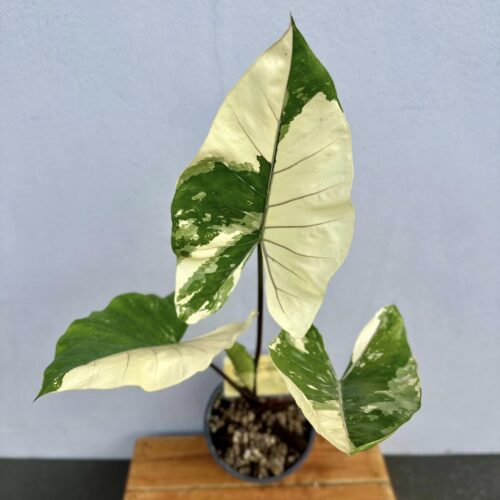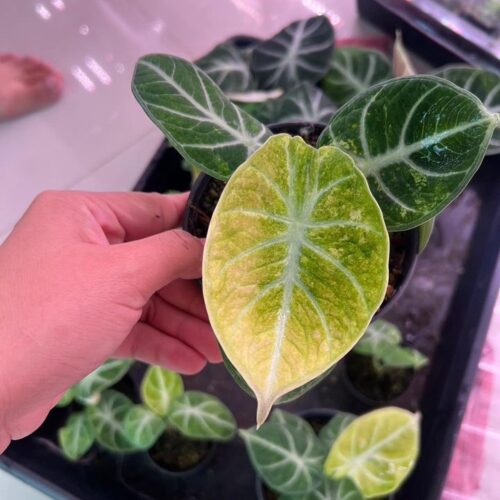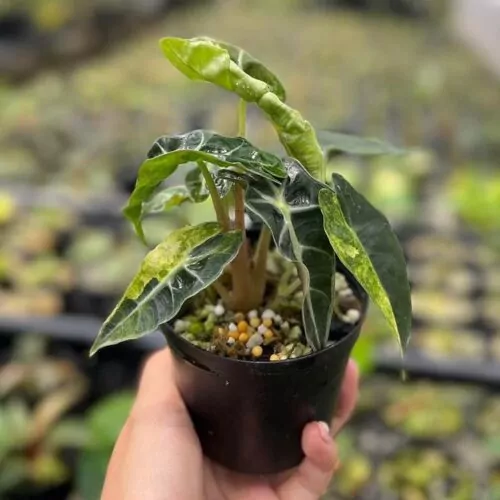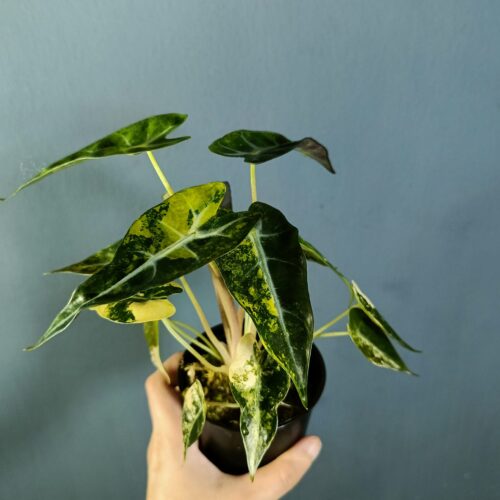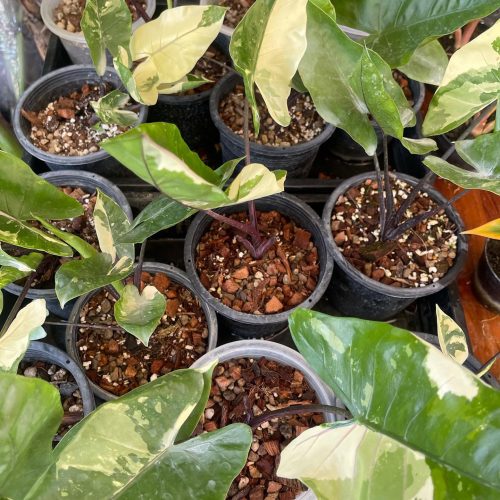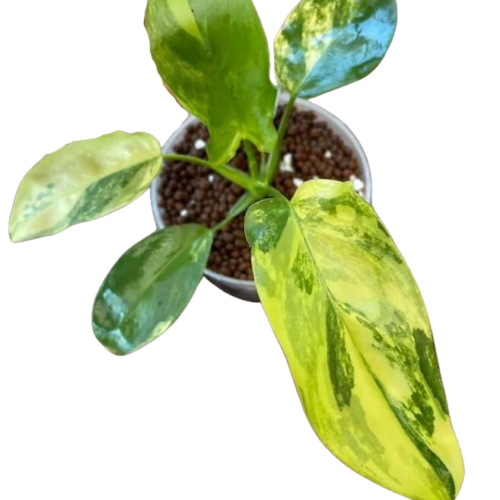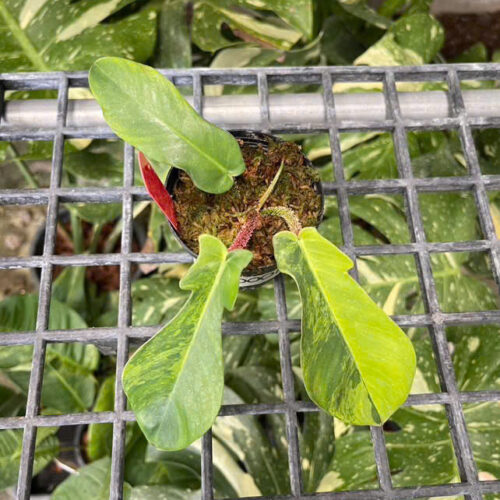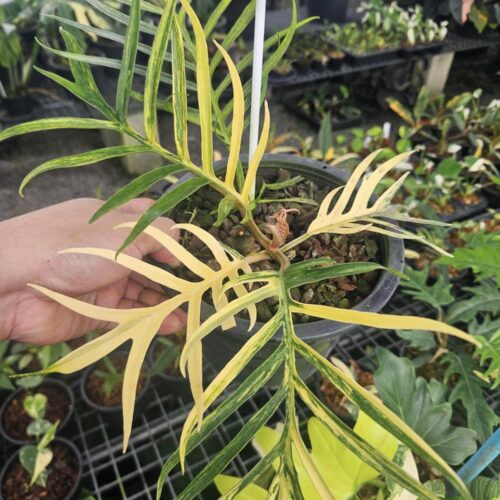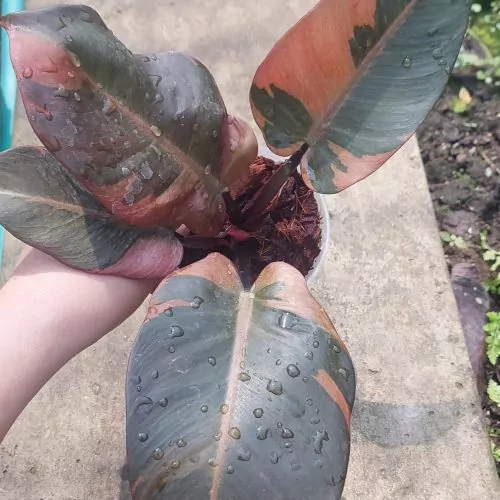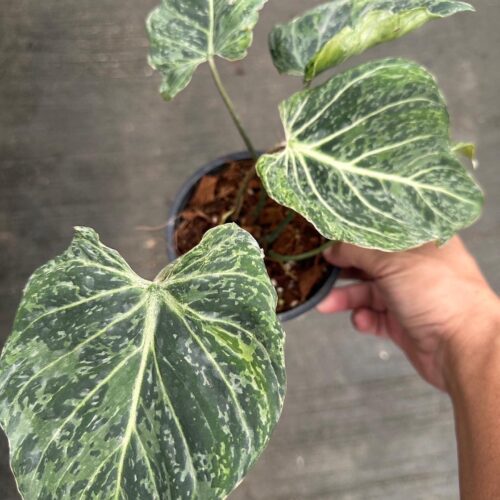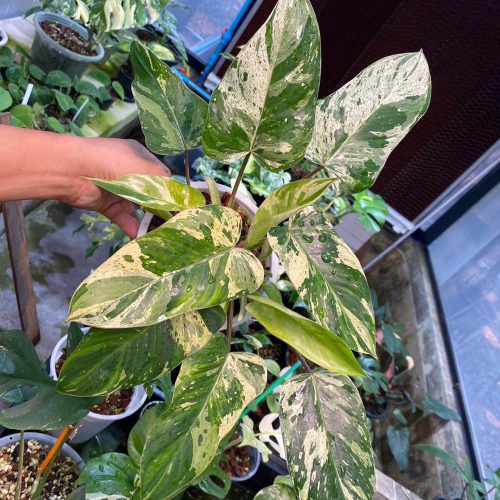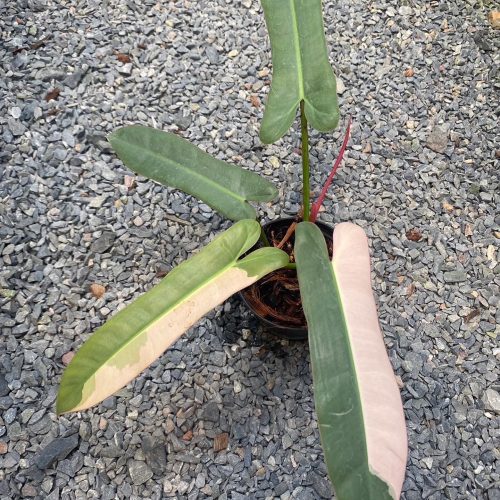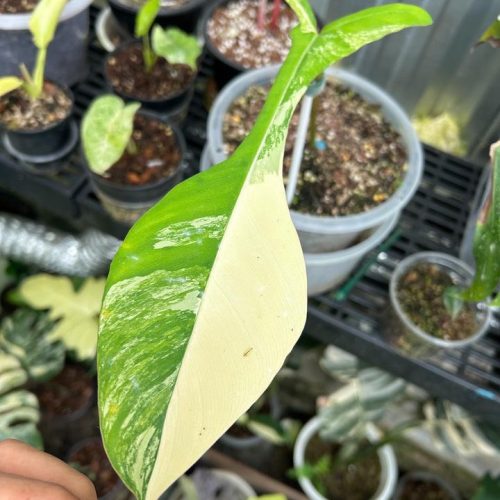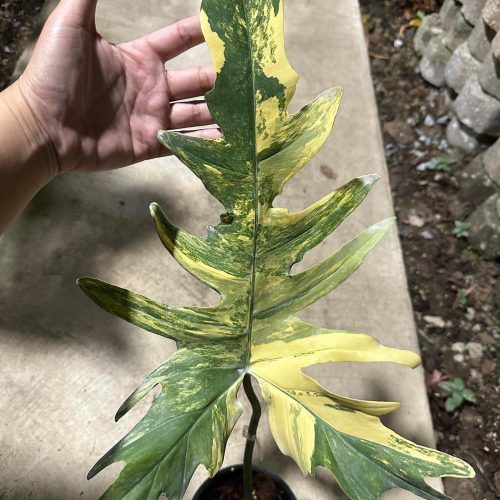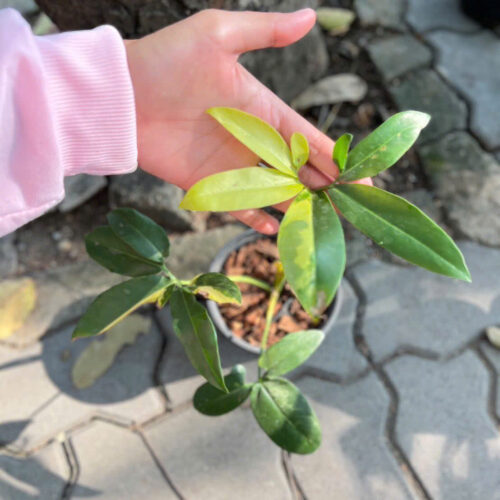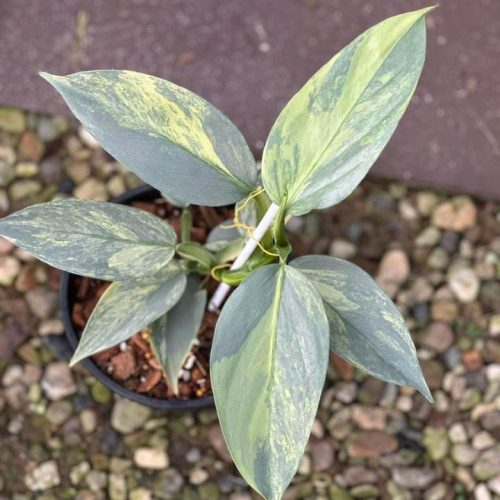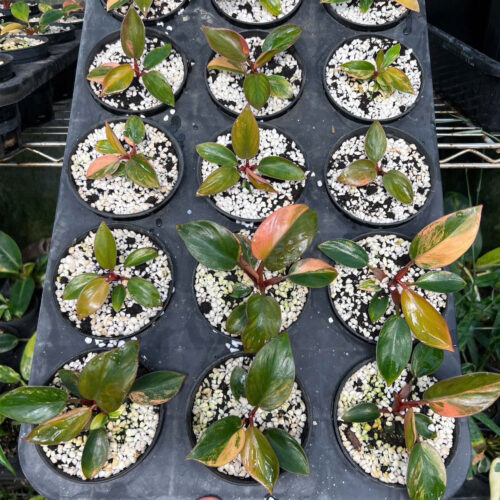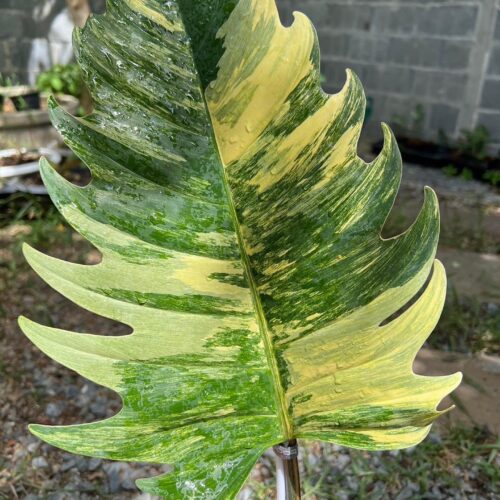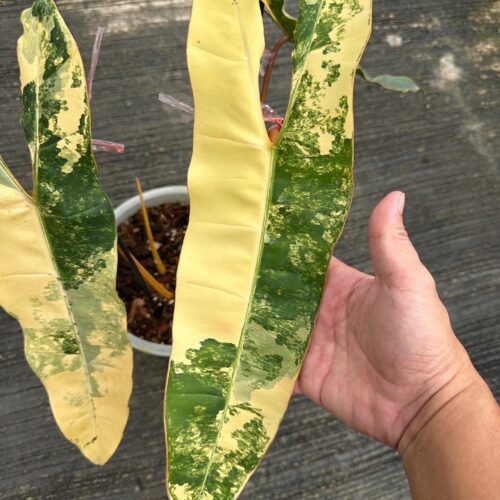The Syngonium Milk Confetti is a gorgeous variety of the popular Syngonium plant. Known for its beautifully variegated leaves, the Milk Confetti variety has white or pink splotches on the leaves that look like they have been splashed with milk or paint.

Origins and Description
The Syngonium Milk Confetti is a cultivar that was developed by cross-breeding different Syngonium varieties. It likely originated in a nursery selectively breeding plants to achieve the desired leaf patterns.
Leaf Patterns
- The leaves of the Milk Confetti variety have an almost painted or splattered look, with splotches of white or light pink distributed across the normal green leaf background. The variegation pattern is random and differs on each leaf, creating visual interest.
Plant Appearance
- In addition to its distinctive foliage, the Syngonium Milk Confetti has the classic aerial root climbers that allow it to attach itself to trellises, poles, and trees as support to grow upwards. The stems have a light green color.
Care and Growing Conditions
While beautiful, the variegated Syngonium Milk Confetti does require some specialized care compared to the normal Syngonium plant. Here are its key growing needs:
Light Requirements
- Provide bright, indirect light for your Milk Confetti. Variegated plants need good light exposure to thrive. Direct hot sunlight can burn the white areas of leaves.
This light condition is also suitable for plants like Aglaonema and Epipremnum.
Soil and Watering
- Use a well-draining potting mix and avoid letting the soil get soggy, which can lead to root rot. Allow the top inch of soil to dry out between waterings.
Similar soil conditions are ideal for Sansevieria and Scindapsus.
Humidity and Temperature
- Average room humidity and temperatures between 60-80°F provide ideal growing conditions. Higher humidity is beneficial in drier environments to prevent leaf tip burn.
This care requirement is also suitable for Homalomena and Rhaphidophora.
“To learn more about the general care requirements and tips for Syngonium, delve into our Syngonium Care guide.”

“Unlock the beauty of nature in your home with Syngonium Milk Confetti! Click now to bring this stunning, easy-to-care plant into your life and transform your space. Don’t miss out – your green oasis awaits!”
Syngonium species are the most sought after by aroid plant lovers
Propagation and Growth
The Syngonium Milk Confetti propagates well from both cuttings and dividing the plant at the root ball. Here’s more on propagating and fostering plant growth:
Propagation
- Take 6 inch stem cuttings below a node, remove lower leaves, and root in water or soil mix. New plants will sprout roots in 4-6 weeks.
Encouraging Fullness
- Pinching off the tip of the stem behind the last two leaves encourages bushier, fuller growth. Try fertilizing monthly in the spring and summer as well.
Supporting Vertical Growth
- Provide moss poles, trellises, walls, or tree trunks for aerial roots to latch onto. The vines can reach up to 6 feet long when properly supported vertically. This growth habit is similar to Colocasia and Alocasia.
Varieties and Cultivars
While the pink and white splashed foliage defines the Milk Confetti variety, new Syngonium cultivars are being developed all the time by houseplant breeders.
Unique Varieties
- Keep an eye out for unique selections like the Syngonium Pixie with unusually small leaves or the Albo Variegata with nearly white leaves and light green veins.
Availability
- The Milk Confetti remains the most popular and widely available variegated Syngonium variety due to its distinctive and stable leaf patterns over time.
“Explore a range of exciting Syngonium varieties in our detailed article on Syngonium Types: 5 Stunning Syngonium Varieties.”
Pests, Diseases, and Problems
Overall, Syngoniums tend to be less susceptible to issues than some houseplants if their care needs are met. But here are a few potential things to watch for:
Potential Pests
- Mealybugs, spider mites, and aphids may occasionally be a nuisance. Isolate and treat any infected plants immediately.
Preventing Leaf Spot
- Avoid getting water on the leaves and address overly moist soil to prevent bacterial or fungal leaf spot diseases. Increase air circulation as well.
Leaf Damage and Discoloration
- If leaves develop brown crispy edges or random color loss, review care needs like water, light exposure, and humidity. White areas on leaves are more sensitive to irregular conditions.
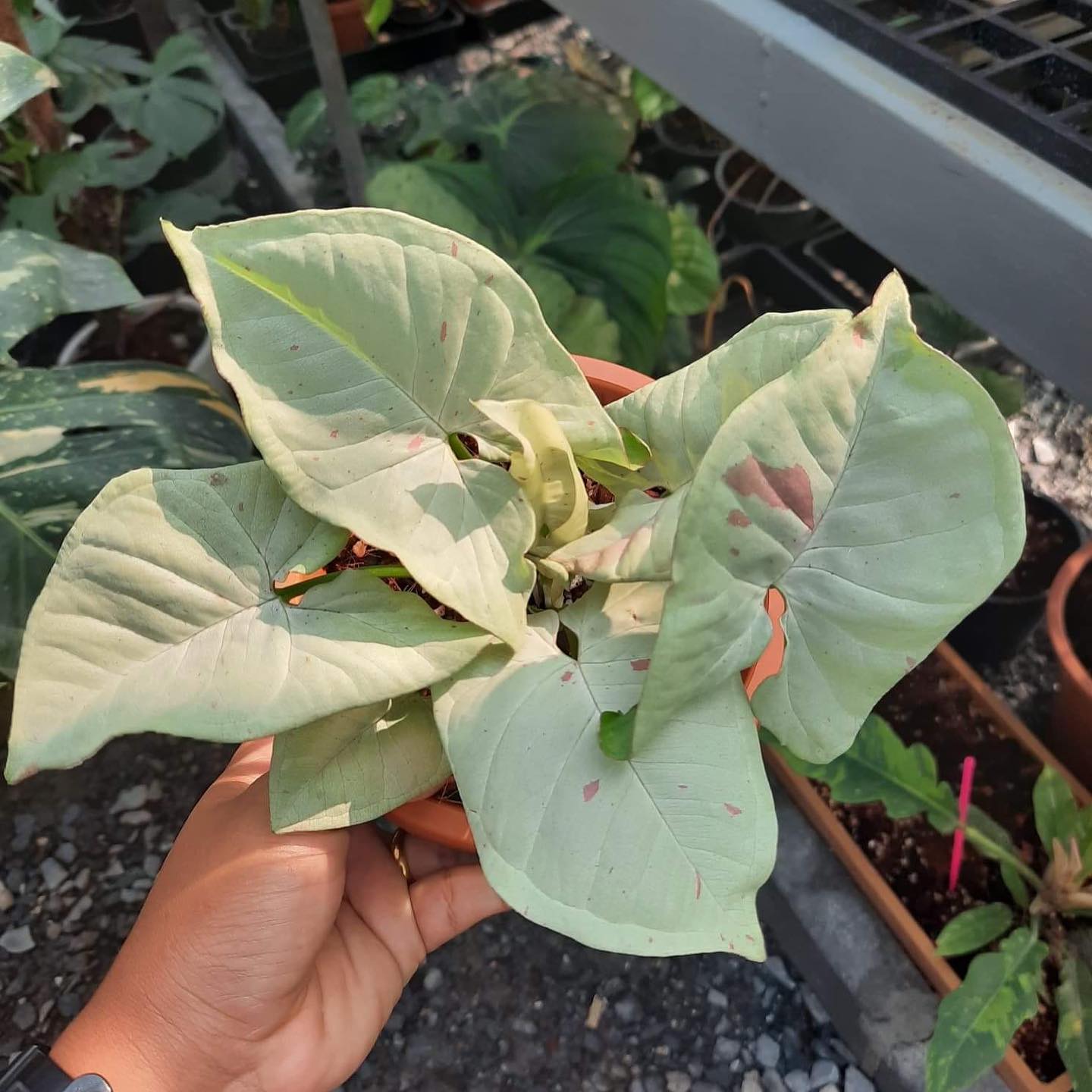
Decorative Uses in the Home
With its vibrant pink-speckled foliage, the climbing Syngonium Milk Confetti makes a wonderful addition to home decor.
Decor Types
Use as a tabletop or hanging plant. Or let it climb up a decorative moss pole or weave along wood beams and mantels.
This versatility is shared with Philodendron and Monstera.
Design Palettes
- The pink in the Milk Confetti leaves complements green decors, boho styles with wood elements, modern spaces, simple white color schemes, and more.
Decorating with Other Varieties
- Mix different Syngonium varieties together for a lush indoor plant wall. Contrast the Milk Confetti against dark green standard leaves or a white-variegated kind.
Conclusion
The uniquely variegated Syngonium Milk Confetti brings eye-catching and artistic color to indoor plant displays. Caring for these tropical vines is relatively simple when you provide adequate warm temperatures, humid air, bright indirect sunlight, and well-draining soil. Propagate new plants from cuttings to share, and train the trailing stems up supports to show off those beautifully splattered pink and white leaves. The Milk Confetti is sure to add that special “wow factor” as a houseplant.
FAQs
1. Can Syngonium Milk Confetti tolerate low light? While it can tolerate lower light conditions, its variegation might fade.
2. How often should I repot my Syngonium Milk Confetti? Generally, repotting every 2-3 years should be sufficient.
3. Is Syngonium Milk Confetti toxic to pets? Yes, it can be toxic to pets if ingested.
4. How do I increase humidity for my Syngonium Milk Confetti? Misting the leaves or using a humidifier can help increase humidity.
5. Can I grow Syngonium Milk Confetti outdoors? In a suitable climate, yes. But remember, it’s native to tropical regions and requires similar conditions to thrive.





